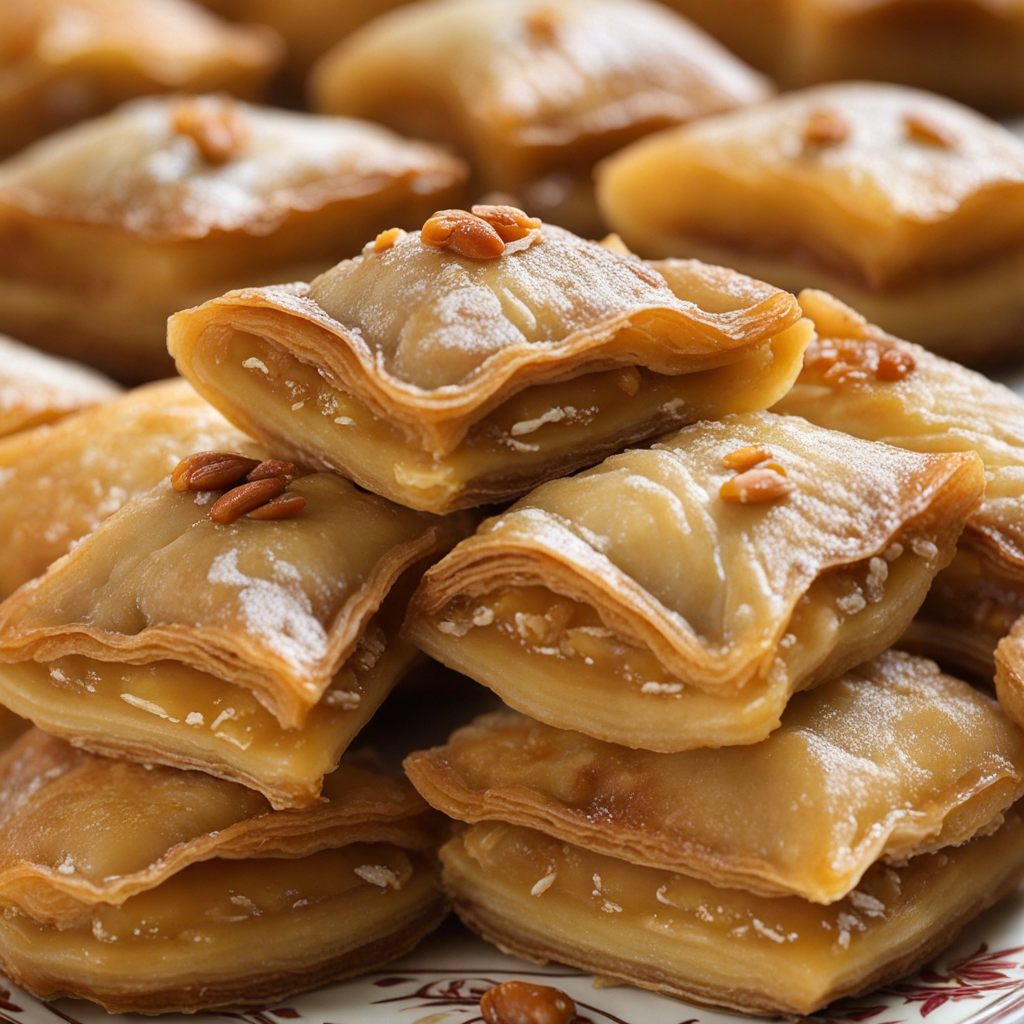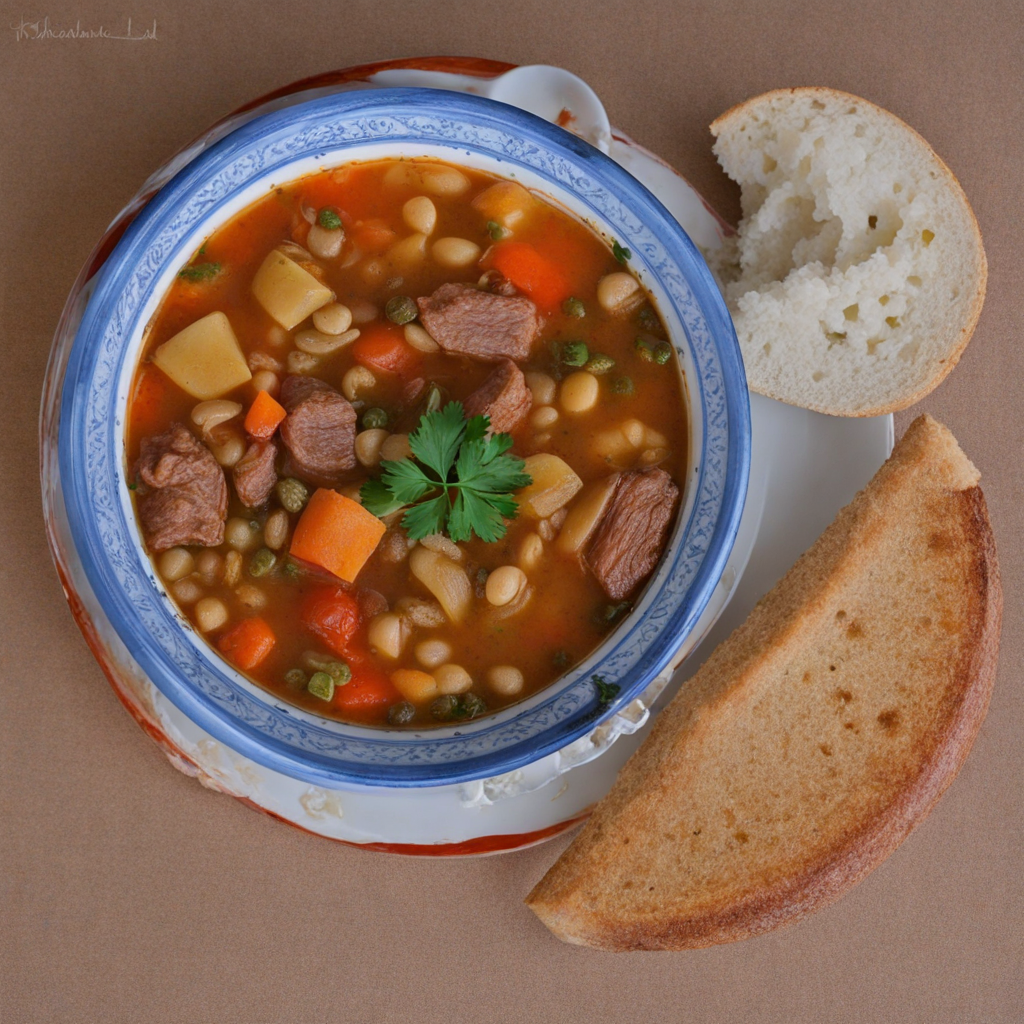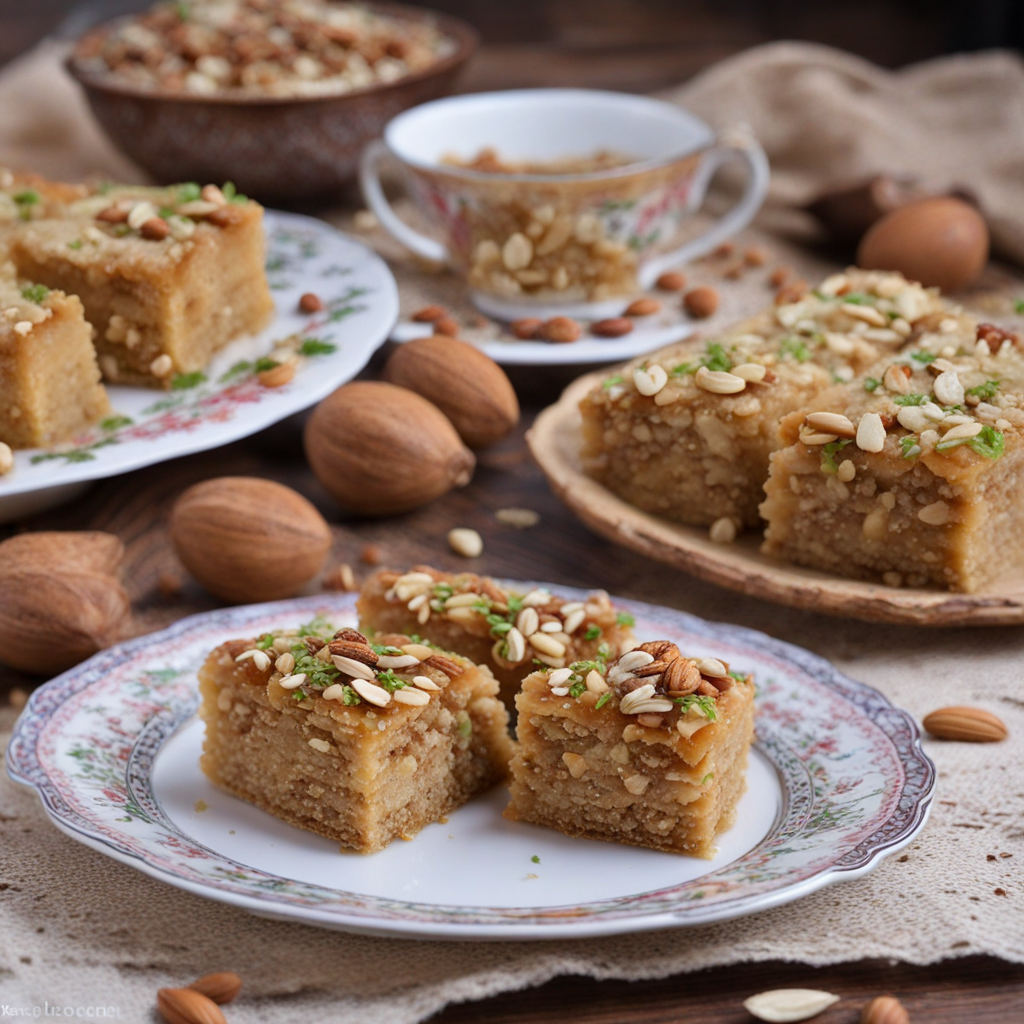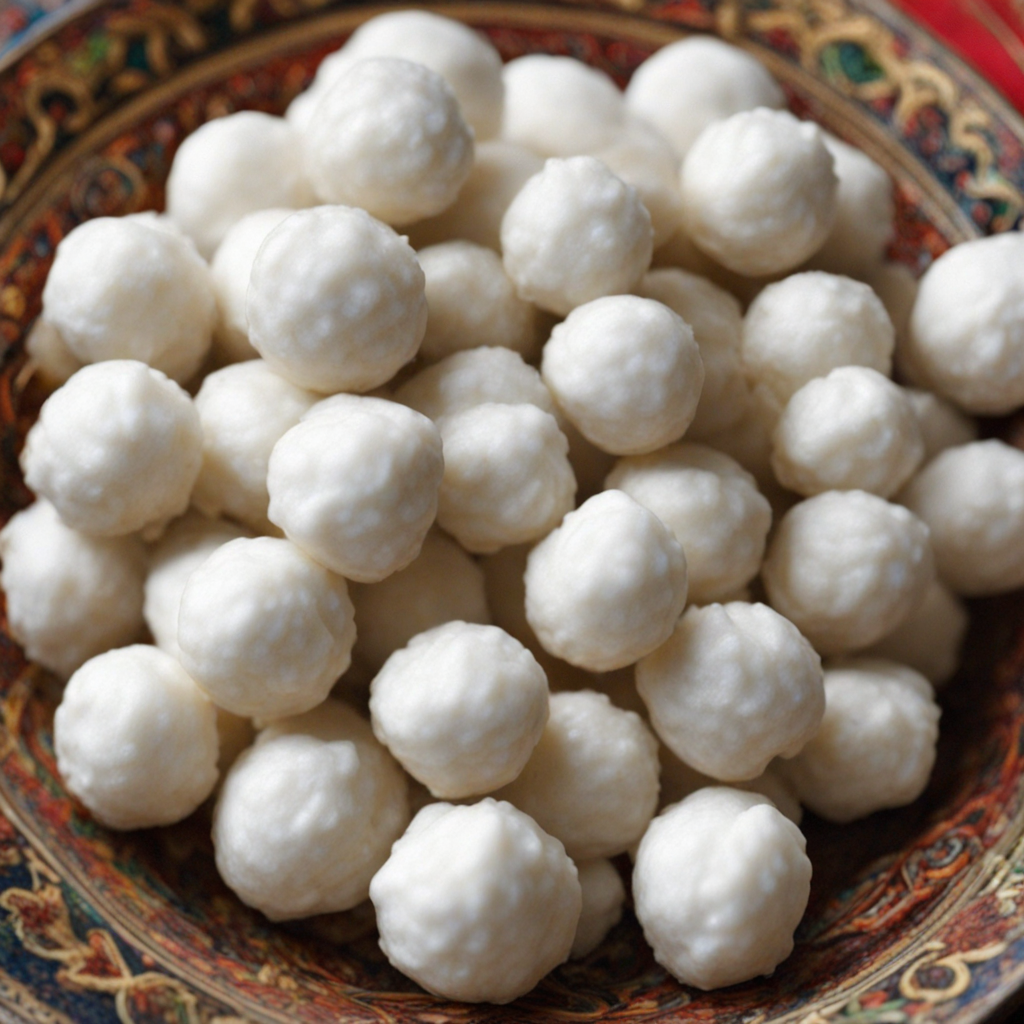Kishti
Kishti is a traditional dish from Tajikistan that exemplifies the rich culinary heritage of Central Asia. This delightful food features a unique blend of flavors, with its main component being a soft, doughy bread that is often steamed or baked to perfection. The bread serves as the foundation for a variety of fillings, which can range from savory to sweet, making kishti a versatile option for any meal. Common fillings include seasoned meats, such as lamb or beef, aromatic vegetables, and sometimes even fruits and nuts, creating a delightful balance of textures and tastes in every bite. The preparation of kishti is a labor of love, often involving time-honored techniques passed down through generations. The dough is meticulously kneaded, allowing it to develop a light and airy quality that complements the rich fillings. Once filled, the kishti is typically shaped into a crescent or round form and then cooked in a traditional tandoor oven or on a hot griddle, giving it a characteristic smoky flavor that enhances the overall experience. The result is a golden-brown exterior that encases a steaming, flavorful filling, inviting adventurous eaters to dig in. Kishti is more than just a meal; it is a cultural experience that brings people together. It is often enjoyed during family gatherings, celebrations, and special occasions, symbolizing hospitality and warmth. Served with a side of tangy yogurt or a fresh salad, kishti delights the palate and offers a taste of Tajik hospitality. As you savor each bite, you’ll not only indulge in the unique flavors of this dish but also feel a connection to the rich traditions and stories of the Tajik people.
How It Became This Dish
The History of Кишти: A Culinary Gem of Tajikistan #### Origins Кишти, a traditional dish from Tajikistan, is a testament to the rich tapestry of flavors and cultural influences that characterize Central Asian cuisine. The origins of Кишти can be traced back to the nomadic lifestyles of the people who inhabited the region, where the need for sustenance and portability shaped their culinary practices. Traditionally, Кишти is a type of pastry, often filled with meat, vegetables, or a combination thereof, and it showcases the resourcefulness of Tajik cooks who utilized local ingredients and culinary techniques. The name Кишти itself derives from the Persian word "keshteh," which means "to harvest," reflecting the agrarian roots of the Tajik people. This etymological connection highlights the deep relationship between the land and its inhabitants, emphasizing the importance of agricultural produce in their diet. As Tajikistan's landscape is marked by mountains and valleys, the ingredients that go into Кишти are often sourced from the local environment, including lamb, beef, and fresh vegetables like onions and potatoes. #### Cultural Significance Кишти holds a significant place in Tajik culture, embodying the spirit of hospitality and communal dining that is central to the region's social fabric. In Tajikistan, food is more than mere sustenance; it is a symbol of connection, tradition, and identity. Families often gather to prepare Кишти together, fostering a sense of unity and shared purpose. The act of cooking and sharing this dish serves as a ritual that strengthens bonds among family members and friends. During major celebrations and festivals, such as Navruz (the Persian New Year), Кишти is often featured prominently on the dining table. It represents abundance and the joy of gathering, as families come together to celebrate the arrival of spring and the renewal of life. The preparation of Кишти for such occasions is treated with great care, often involving the entire family in a festive atmosphere filled with laughter, storytelling, and the sharing of memories. Additionally, Кишти reflects the influence of various cultures that have traversed the region over centuries. The Silk Road, which passed through Tajikistan, facilitated the exchange of culinary practices, ingredients, and cooking techniques. As traders, travelers, and conquerors brought their own flavors to the area, Кишти evolved, incorporating diverse elements while still maintaining its distinct Tajik identity. #### Development Over Time The evolution of Кишти can be traced through various historical milestones that shaped Tajikistan's culinary landscape. During the Soviet era, there was a concerted effort to standardize and modernize traditional cuisine, which led to changes in the preparation and presentation of Кишти. While some families clung to their age-old recipes, others adapted their methods to incorporate mass-produced ingredients and contemporary cooking techniques. This period marked a significant shift in how Кишти was perceived and prepared, as it began to appear in Soviet-style restaurants, often stripped of its traditional significance. With the collapse of the Soviet Union in the early 1990s, Tajikistan experienced a resurgence of interest in its cultural heritage, including its culinary traditions. The newfound independence allowed Tajiks to reclaim their identity, and traditional dishes like Кишти regained their place of honor in homes and social gatherings. This revival was marked by a renewed emphasis on local, organic ingredients, as families sought to reconnect with their agrarian roots and the flavors of their homeland. The resurgence of local markets and the promotion of traditional farming practices also contributed to the renaissance of Кишти and other regional dishes. In recent years, Кишти has gained recognition beyond Tajikistan's borders, thanks to the growing interest in Central Asian cuisine on the global stage. Food enthusiasts and chefs from around the world are increasingly drawn to the unique flavors and historical significance of dishes like Кишти. As a result, it has begun to appear on menus in international restaurants, often presented with a modern twist that respects its traditional essence while appealing to contemporary palates. #### Ingredients and Preparation The preparation of Кишти varies by region and family, but the core elements remain consistent. Typically, the dough is made from flour, water, and a pinch of salt, resulting in a tender yet sturdy pastry that can withstand the cooking process. The filling, which is the heart of Кишти, often consists of finely chopped meat, such as lamb or beef, mixed with onions and spices like cumin and black pepper. Vegetables can also be added, offering a delightful contrast in texture and flavor. Traditionally, Кишти is baked in a tandoor, a clay oven that imparts a unique smoky flavor to the dish. The baking process is an art in itself, requiring skill and experience to achieve the perfect balance of crispiness on the outside and tenderness on the inside. Over time, some variations have emerged, with modern adaptations including frying or steaming the pastries, showcasing the dish's versatility and adaptability. #### Conclusion Кишти is more than just a dish; it is a cultural artifact that encapsulates the history, traditions, and values of the Tajik people. It serves as a bridge between the past and the present, connecting generations through the shared experience of food. As Tajikistan continues to navigate the complexities of modernity while honoring its rich heritage, Кишти stands as a symbol of resilience, creativity, and the enduring power of communal dining. Whether enjoyed at a family gathering, a festive celebration, or an international restaurant, Кишти embodies the essence of Tajik hospitality and the deep-rooted connection to the land. Its journey through history reflects not only the evolution of a beloved dish but also the spirit of a people who cherish their culinary heritage while embracing the future.
You may like
Discover local flavors from Tajikistan







